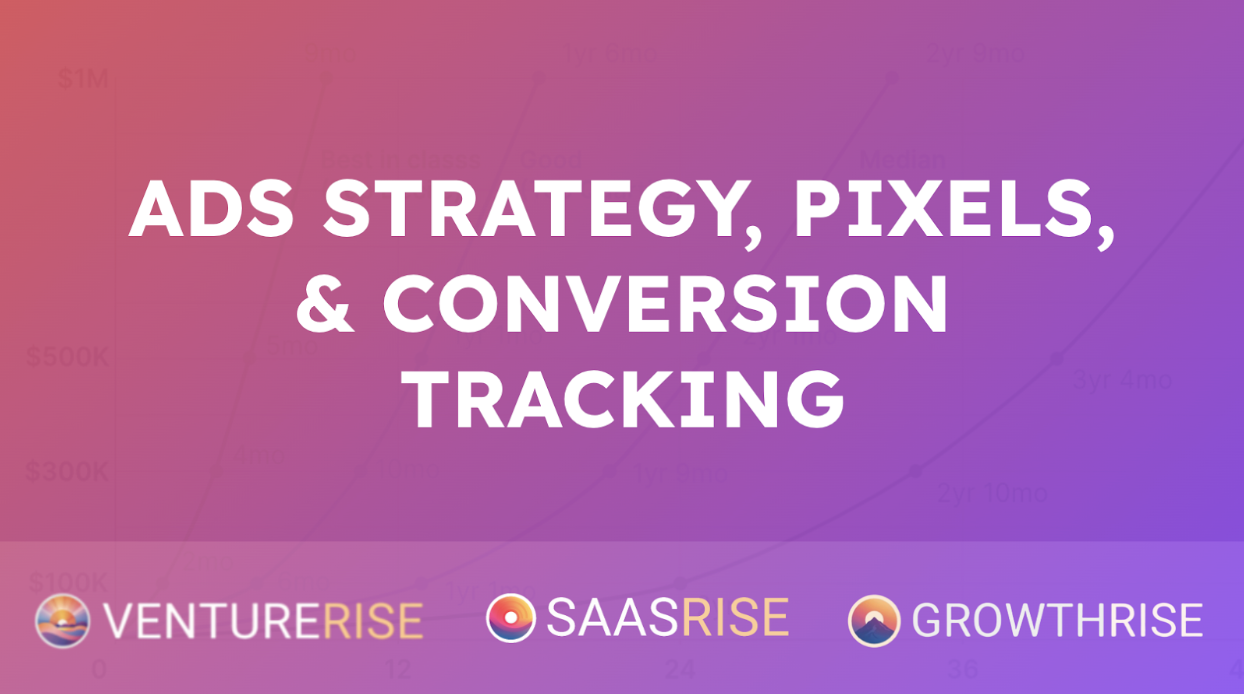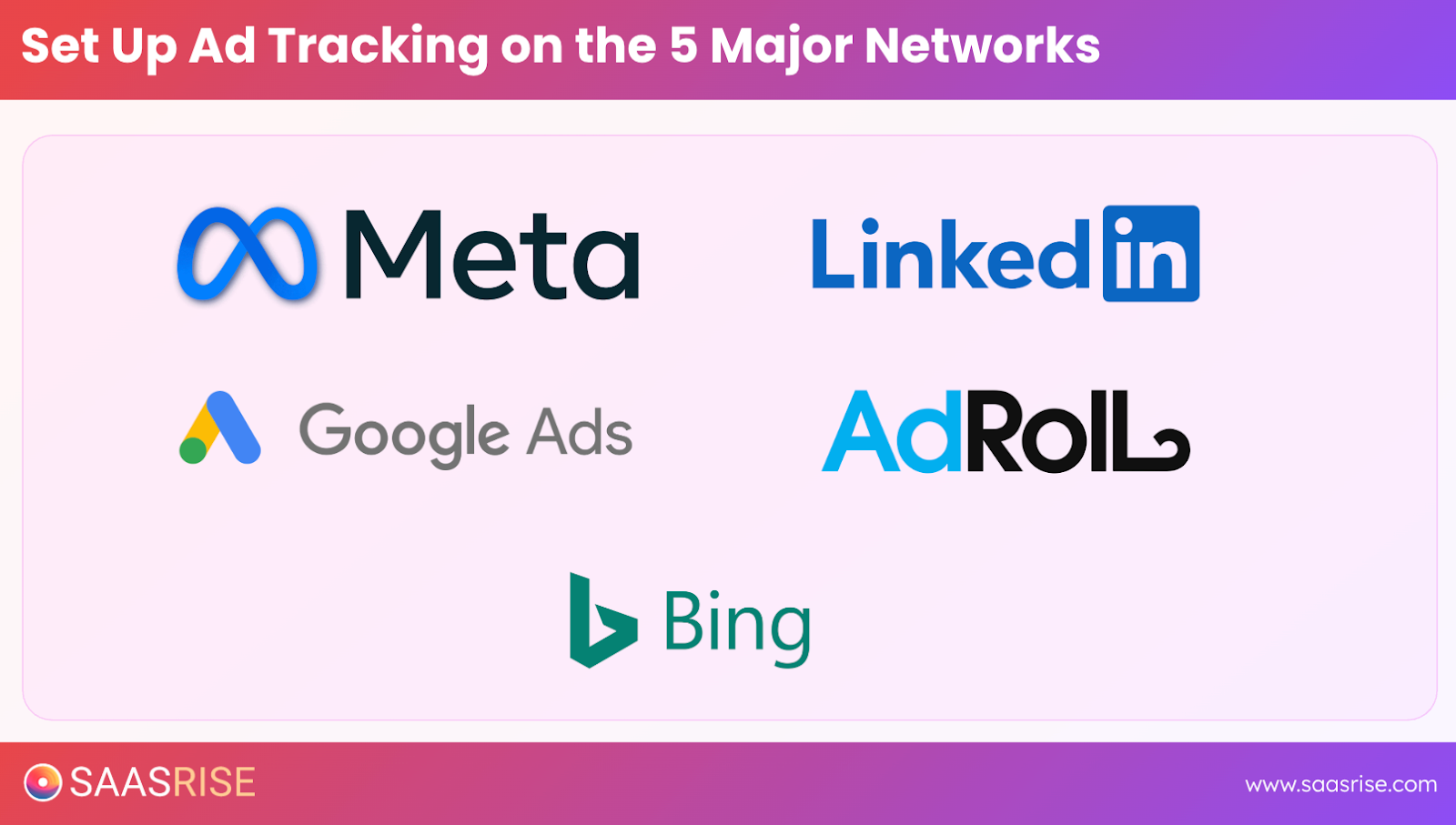
How to Build a B2B Ad Strategy That Actually Scales
If you want to build a predictable growth engine in your SaaS company, there’s one skill that changes everything: learning how to make paid ads profitable. When you understand your unit economics and can generate customers at a cost that fits your CAC and LTV goals, you unlock one of the most powerful growth levers in business.
It’s not about luck or creative flair — it’s about math, testing, and consistency.
Because here’s the truth: outbound and content are great for momentum. But if you want to scale from $3M to $30M in ARR, you need paid ads that work.
This content is from the 16 week B2B SaaS Growth Program that we run twice a year.
Why Paid Ads Matter for Scaling SaaS
Most SaaS companies hit a wall around $5–10M ARR. Outbound and organic get them there, but paid ads are what push them beyond it.
Once ads become profitable, they create unlimited scalability. You can literally buy growth — as long as you understand your numbers and keep optimizing.

When we figured this out at one of my early companies, we scaled from $10M to $50M ARR in less than three years and eventually sold for $169M. The difference-maker wasn’t a new product or a viral campaign. It was the fact that we knew exactly how much we could spend to acquire a customer — and we built a system around it.
That’s what I want to help you build here.
Step 1: Start With Your Economics
Before you spend a dollar, you need to know three numbers cold:
- CAC (Customer Acquisition Cost) — How much you can spend to acquire a customer.
- CPL (Cost Per Lead) — What a qualified lead should cost to stay within your CAC.
- LTV (Lifetime Value) — How much an average customer is worth over their lifespan.

Here’s a simple rule of thumb:
- For SaaS, your target CAC should be about six months of revenue from a customer.
- Your target CPL should be your CAC multiplied by your lead-to-customer conversion rate.
Example:
If your CAC goal is $5,000 and 10% of qualified leads become customers, your CPL target should be $500.
That’s your north star — every campaign, every ad, every click needs to fit within those economics.
Step 2: Build Your Test Budget
You can’t find winning ad channels without testing.
The most efficient way to start is to allocate a test budget across multiple networks.
Here’s how I recommend doing it:
- $5,000 for Meta (Facebook + Instagram)
- $5,000 for LinkedIn
- $5,000 for Google Ads (Search + Display)
- $5,000 for AdRoll or Bing (optional add-ons)
That’s around $20,000 total — enough to get statistically significant data on cost per lead (CPL) from each network.
If that number feels high, think of it this way: you’re not buying traffic, you’re buying insight.
Within 30–45 days, you’ll know exactly which channels produce the best leads and which ones waste money. That knowledge alone can be worth millions in the long run.
Step 3: Understand Cold vs. Warm Ads
Not all ads are created equal. Some introduce your brand to people who’ve never heard of you. Others re-engage the people already in your funnel.

I break ads into two main categories:
1. Cold Ads
These reach new audiences who have never interacted with your brand before. Examples:
- Matched audience ads (targeting your ABM list)
- Lookalike ads (reaching similar profiles to your best customers)
- Paid search (keyword-driven discovery)
2. Warm Ads
These target people who already know who you are or have engaged with you before. Examples:
- Retargeting ads (to people who visited your site or clicked your emails)
- Thought leader ads (boosted organic content on LinkedIn)
- Customer upsell or renewal campaigns
Both are critical — but they serve different purposes in your funnel.
Cold ads build awareness and reach.
Warm ads build trust and conversion.
When combined, they drive your audience through the full AIDA funnel — Attention, Interest, Desire, and Action — and even into Retention and Expansion for your existing customers.
Step 4: Set Your Goals and Metrics
Every ad campaign needs clear, measurable goals. Here’s what to define before you launch:
- Target CAC – e.g., $5,000 per customer
- Target CPL – e.g., $500 per lead
- Conversion Rate – percentage of leads that turn into customers
- Monthly Budget – total ad spend per channel
Then, decide what counts as a conversion:
- A free trial?
- A booked demo?
- A qualified form submission?
- A downloaded resource (if top-of-funnel)?
Make sure your CRM and ad platforms track the same conversions consistently.
Step 5: Install Pixels and Conversion Tracking
Tracking is everything. If you can’t see where your conversions come from, you’re flying blind.

You need to install tracking pixels from every ad network:
- Meta Pixel (Facebook + Instagram)
- LinkedIn Insight Tag
- Google Ads Pixel
- AdRoll Pixel
- Bing UET Tag (if using Bing Ads)
Add each pixel to every page of your site — usually via Google Tag Manager or directly in your site header.
Then, set up conversion tracking for key events:
- Page views
- Form fills
- Trial sign-ups
- Purchases or payments
Once that’s done, you’ll be able to see not just impressions and clicks — but which ads are actually producing leads and customers.
Step 6: Define Conversions and Feed Data Back
Pixels are step one. The real power comes from feeding conversion data back into the ad platforms. Every time someone becomes a qualified lead, starts a trial, or purchases, that information should automatically flow back into your ad accounts.
Why?
Because this is how the algorithms learn who your best customers are. If your platforms know who’s converting, they’ll automatically show your ads to more people like them.
That’s how you move from manual optimization to machine learning-assisted scaling.
Step 7: Choose the Right Attribution Tool
One of the biggest mistakes SaaS teams make is trusting the ad platforms to measure performance.
Every network — Meta, LinkedIn, Google — wants to take credit for conversions. That leads to double-counting and inflated results.
The solution: use an independent attribution tool.
Two great options:
- Cometly – affordable, visual, and great for managing multi-channel campaigns.
- HockeyStack – premium analytics with multi-touch attribution and deep funnel insights.
These tools consolidate all your ad data into one dashboard, showing true CPL and CAC across every channel.
They’ll also let you apply attribution models like first-touch, last-touch, or U-shaped, which give partial credit to every channel that influenced a conversion.
This is the level of clarity you need to confidently scale ad spend.
Step 8: Optimize Relentlessly
Once your ads are running, the real work begins. For the first month or two, your goal isn’t to scale — it’s to learn.
That means testing variables like:
- Headlines and copy angles
- Ad formats (video, image, carousel)
- Audiences and lookalikes
- Landing page designs and CTAs
Small tweaks can cut your CPL in half.
Example:
Simply removing navigation menus from your landing page can increase conversions by 50–70%. It sounds minor, but over time it can mean the difference between a profitable and unprofitable CAC.
Ad testing isn’t one big A/B test — it’s hundreds of small improvements that compound over time.
Step 9: Track Results Weekly and Reallocate Budget
Review your numbers every week.
Look at:
- Impressions
- Clicks and CTR
- CPL
- CAC
- Conversion rates
Double your spend on the ad types that meet or beat your target CPL. Cut or pause the ones that don’t.
This is the rhythm that keeps your marketing efficient.
A simple weekly ad tracking spreadsheet is often more valuable than any fancy software. Just list your channels, spend, leads, CPL, and CAC. Review it with your team every Monday.
Step 10: Keep Going Until It Works
This is the part most founders get wrong. Paid ads almost never “work” immediately. They take iteration — 3 to 6 months of consistent testing, tracking, and optimization. But once you find your formula, it compounds.

When you get ads profitable, you can add millions in ARR — and tens of millions in enterprise value.
One of our portfolio companies scaled ad spend from $100K to $400K per month over 18 months, driving exponential revenue growth and valuation increase.
It all started with getting the unit economics right and sticking with it.
Tools and Platforms to Use
Here’s your quick-start stack:
Ad Networks:
- Meta (Facebook + Instagram)
- Google Ads
- AdRoll
- Bing Ads
Tracking & Attribution:
- Cometly
- HockeyStack
- Google Analytics 4
Creative & Design:
- Canva (for static ads)
- ChatGPT (for quick ad copy and variations)
- Omagic or CapCut (for 15–30 second video ads)
Landing Pages:
- Unbounce or Webflow for fast testing
- Google Optimize or HubSpot for A/B testing
The Takeaway
Building a profitable ad system isn’t about flashy creative or big budgets — it’s about precision, testing, and consistency. If you know your numbers, track everything, and commit to optimizing for 3–6 months, you’ll find your formula.
Here’s the playbook in one sentence:
“Install your pixels, set your targets, run controlled tests, track everything, and scale what works.”
When you do that, ads stop being a gamble — and start becoming the most predictable part of your revenue engine.
That’s how you build a B2B ad strategy that actually scales.
This content is from the 16 week B2B SaaS Growth Program that we run twice a year.

